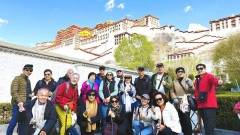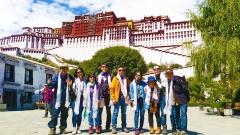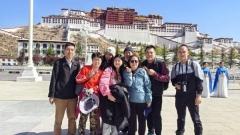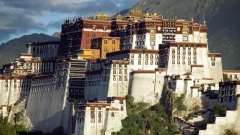The circumambulation (kora) of Mount Kailash / Gang Rinpoche (冈仁波齐) is one of the world’s great spiritual journeys — a 52-km high-altitude pilgrimage that holds deep meaning for Tibetan Buddhists, Hindus, Jains and Bon practitioners. It is also a serious alpine trek across remote terrain (pass height ~5,600 m). Proper planning, respect, and caution are essential. This guide explains everything you need to know: logistics, physical demands, altitude and health, daily itinerary options, essential gear, cultural etiquette, and emergency advice.
1. Quick facts at a glance
-
Distance (full kora): ~52 km (classic three-day/one-day options exist)
-
Highest point: Drolma La / Dolma La pass, approx. 5,600 m (18,370 ft)
-
Typical duration: 2–3 days (one-day strong hikers; 3 days recommended)
-
Best months: May–October (July–August wetter; late spring and autumn best for stable weather)
-
Permit: Tibet Travel Permit + Ali Region permit; must travel with a licensed Tibet tour operator

kailash kora
2. Who should (and shouldn’t) do the kora
Good candidates: Experienced hikers in reasonable fitness who have acclimatized to high altitude; pilgrims who accept slow pacing.
Not recommended: People with recent heart disease, uncontrolled hypertension, severe respiratory illness, recent stroke, or those who are not prepared for long days at altitude. Pregnant women should avoid the kora.
3. Physical & altitude demands — what to expect
The kora combines long walking distances, steep ascents/descents (especially the climb to Drolma La), and very high elevation. You will be exposed to thin air, cold winds, strong UV, and large daily temperature swings. Altitude sickness (AMS) symptoms: headache, nausea, dizziness, fatigue, poor sleep. Severe AMS (HAPE/HACE) is rare but life-threatening.
Preparation tips:
-
Spend 2–3 days at ~3,500–4,000 m (e.g., Lhasa, Shigatse, Saga) before attempting the kora.
-
Do cardio training, stair/hill repeats, and multi-hour hikes in the months before travel.
-
Practice hiking with a loaded daypack.
4. Typical itineraries (common approaches)
A. Classic 3-day clockwise kora (most common):
-
Day 1: Darchen – Drirapuk Monastery (Approx. 20 km: 6 km by eco-bus + 14 km trekking)
-
Day 2: Drirapuk — Dzultripuk Monastery (Approx. 20 km, full-day trekking)
-
Day 3: Dzultripuk Monastery — Darchen — Zanda (Approx. 11 km: 7 km trekking + 4 km by vehicle)
>>Book the kora tour right now
B. 2-day (faster) kora: for fit trekkers — long day over the pass (very strenuous; not recommended for most).
C. 1-day kora: Possible for very fit and acclimatized walkers starting pre-dawn and moving fast — high risk of AMS/fatigue.
5. Logistics & permits
-
Permits: Foreign travelers require the Tibet Travel Permit and usually an Ali Prefecture permit for the Ngari region. These are arranged by a licensed travel agency in China (you cannot obtain them independently).
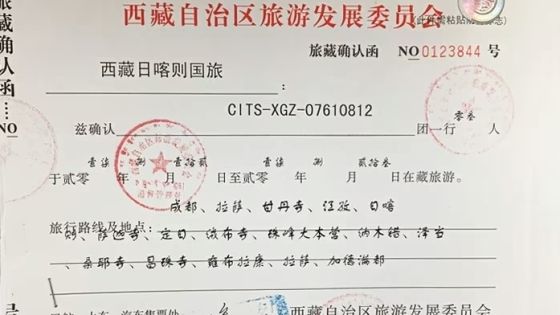
A Sample of Tibet Travel Permit
-
Transport: Most visitors reach Darchen by vehicle from Shiquanhe (Ngari) or from Saga / Mount Everest area; flights to Ngari Gunsa (when operating) shorten travel.
-
Guide requirement: Foreigners must join an organized tour with a registered guide and vehicle. Local guides have vital knowledge of weather, culture, and evacuation.
-
Accommodation: Very basic near kora — guesthouses, yak wool tents, or simple guesthouses in Darchen and designated stop points.
6. Health & medical preparation
-
Doctor check & meds: Visit your doctor pre-trip. Carry personal meds and a medical certificate if you’re over 60 or have chronic conditions. Consider acetazolamide (Diamox) for prevention (consult doctor).
-
First-aid kit: Include altitude meds, painkillers, anti-nausea, antibiotics, blister care, rehydration salts.
-
Oxygen: Portable oxygen cylinders and concentrators are commonly available through tour operators; know how to use them.
-
Evacuation plan: Ask your tour operator about emergency protocols, nearest clinics, and helicopter evacuation options (very expensive). Have insurance that covers high-altitude evacuation and repatriation.
7. Gear checklist (essentials)
Clothing & protection
-
Insulated down jacket, windproof shell, softshell/hard shell pants
-
Thermal base layers (top & bottom), fleece mid-layer
-
Warm hat, sun hat, neck gaiter/buff
-
Insulated gloves + lightweight liners
-
Sunglasses (UV 400) and glacier goggles for wind/snow
-
High-SPF sunscreen & lip balm
Footwear & trekking
-
Sturdy, broken-in waterproof hiking boots (ankle support)
-
Warm socks + liners, spare socks
-
Gaiters (protect from snow/scree)
-
Trekking poles (strongly recommended)
Other
-
Daypack (25–35 L) and waterproof cover
-
Headlamp + spare batteries
-
Insulated water bottle / thermos; water purification tabs
-
Camera, spare batteries (cold drains batteries)
-
Lightweight sleeping bag (if camping or basic guesthouses)
-
Personal hygiene & toilet paper
8. Food, hydration & pacing
-
Hydrate constantly. Drink warm fluids; avoid alcohol and heavy meals in first days at altitude.
-
Eat carbohydrate-rich, easily digestible foods. Tour leaders usually provide simple Tibetan/Chinese meals; bring energy bars and electrolyte powders.
-
Pacing: Walk slowly. It’s not a race — moving slowly reduces AMS risk and conserves energy for the pass day.
9. Cultural & spiritual etiquette
The kora is first and foremost a religious pilgrimage — many pilgrims perform prostrations, walk clockwise, spin prayer wheels, and recite mantras.
Respect local practice: Walk clockwise, do not step on or over prayer flags, stupas (chortens), mani walls, or offerings. Ask before photographing people, especially during prostrations.
Dress modestly and remove hats in temples. Keep a quiet, respectful demeanor around pilgrims and monks.
Offerings: If you leave small offerings, use appropriate items (incense, tsampa, donations). Do not leave trash.
10. Weather & when to go
-
Best window: Late May–early October. June–August can be warmer but wetter (possibility of snow or landslides); autumn (Sept–Oct) has crisp skies and golden light.
-
Temperature swings: Days may be mild (0–10°C), nights well below freezing at high passes; strong winds increase chill factor.
-
Be prepared for sudden storms and plan conservatively for the pass day.
11. Safety hazards & how to mitigate them
-
Altitude sickness: Acclimatize, move slowly, know early symptoms, use oxygen, descend if symptoms worsen.
-
Hypothermia/frostbite: Wear proper clothing layers; protect extremities; avoid wet clothing.
-
Dehydration and exhaustion: Regular hydration and energy snacks; rest frequently.
-
Falls on steep/rocky ground: Use trekking poles and sturdy boots; watch foot placement on loose scree on descent.
-
Limited rescue services: Expect delayed medical response in remote areas; travel with insurance and a responsible operator.
12. Recommended tour provider services & cost considerations
-
Choose a Tibet-registered travel operator with Ngari experience (they handle permits, vehicles, accommodation, oxygen supplies, and emergency planning).
-
Group vs private: Private or small-group tours offer more flexibility to adjust for health/pace; strongly recommended for older or less experienced walkers.
-
Costs: Vary widely depending on inclusions (vehicles, guides, oxygen, porters, accommodation). Compare what’s included: permits, driver fees, oxygen, and evacuation coverage.
13. Photography & drones
Drones are often restricted in Tibet; check with your operator and local regulations. Respect pilgrims’ privacy and sacred rituals when photographing.
Cold batteries: store spares in inner pockets close to your body to keep them warm.
14. Environmental responsibility
The kora area is ecologically fragile. Follow Leave No Trace principles: carry out waste, avoid single-use plastics, and respect local wildlife and vegetation. Support local businesses and guides.

Tent guesthouses are available at Mount Kailash.
15. Emergency checklist & phone numbers (prepare in advance)
-
Carry copies of passport, permits, travel insurance, and emergency contact numbers.
-
Make sure your tour operator provides a local emergency contact and clearly explains evacuation procedures.
-
Keep a small amount of cash for emergencies — remote areas may not accept cards.
16. Final practical tips & summary checklist
-
Get a medical check and bring a doctor’s certificate if you’re older or have conditions.
-
Acclimatize for 2–3 days at mid-altitude before attempting the kora.
-
Hire experienced local guide & driver; do not attempt solo.
-
Pack layers, sun protection, and spare batteries.
-
Move slowly and prioritize safety over finishing the kora.
-
Respect pilgrims and local traditions.
-
Buy good travel insurance including high-altitude evacuation.
Conclusion
Completing the Mount Kailash kora is a powerful spiritual and physical achievement — a journey that asks for humility, preparation, and reverence. With thoughtful acclimatization, the right gear, a trustworthy Tibet-registered operator, and a slow, mindful pace, pilgrims and trekkers can make the experience safe and deeply rewarding.
If you’d like, I can help you draft a 15-day kora itinerary, a printable packing checklist, or recommend what to ask a Tibet tour operator before booking.



